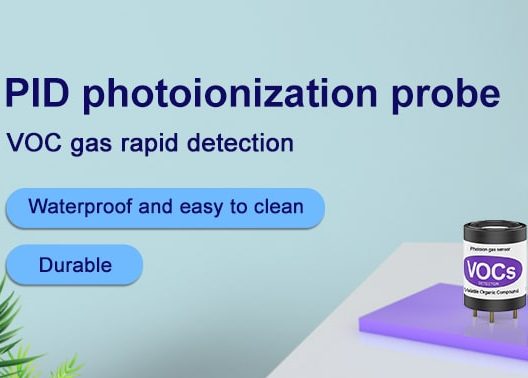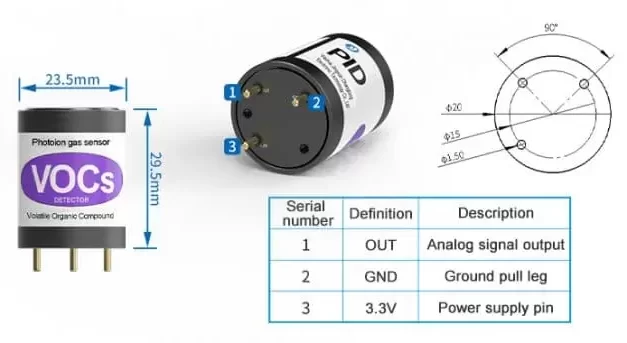PID (Photoionization Detection) sensor are essential tools used in various industries to detect and measure volatile organic compounds (VOCs) and other hazardous gases. These sensors play a critical role in ensuring workplace safety, environmental monitoring, and industrial processes. This comprehensive overview will explore the principles of operation, applications, advantages, and considerations related to PID sensors, shedding light on their significance in modern industrial and environmental settings.
Principles of Operation

PID sensor operate the principle of photoionization, where high-energy ultraviolet (UV) light is used to ionize gas molecules, leading to the generation of positively charged ions. When VOCs or other target gases are present, they absorb the UV light and undergo ionization, producing a measurable current proportional to the gas concentration. This ionization process enables PID sensors to detect a wide range of VOCs with high sensitivity and selectivity, making them valuable tools for gas detection and monitoring.
Key Components of PID Sensors

PID sensors consist of several key components, including a UV lamp, photoionization chamber, electrodes, and a detector. The UV lamp emits high-energy UV light, which enters the photoionization chamber where gas molecules are ionized. The resulting ions and electrons are then collected by the electrodes, generating a measurable current that is proportional to the gas concentration. The detector translates this current into a digital signal, providing real-time gas concentration readings to the user.
Advantages of PID Sensors
The use of PID gas sensor offers several distinct advantages, making them indispensable in gas detection and monitoring applications. One of the primary advantages is their high sensitivity to a wide range of VOCs, including low-level concentrations, enabling early detection of potential hazards. Moreover, PID sensors provide real-time measurements, allowing for immediate response to changing gas concentrations. Their portability and ease of use make them suitable for field applications, while their ability to detect multiple gases simultaneously enhances their versatility in various operational environments.
Considerations for Using PID Sensor
While PID sensors offer numerous benefits, certain considerations take into account when using them. Cross-sensitivity to other gases and potential interference from environmental factors, such as humidity and temperature, can impact the accuracy of PID sensor readings. Regular calibration and maintenance are essential to ensure reliable performance, and users must be aware of the potential presence of interfering substances that could affect sensor accuracy. Additionally, proper training and understanding of the sensor’s limitations are crucial for effective and safe use in diverse industrial and environmental settings.
Advancements in PID Sensor Technology
Advancements in PID sensor technology have led to the development of enhanced features and capabilities. Modern PID sensors now offer extended measurement ranges, increased sensitivity, and improved resistance to environmental factors. Furthermore, the integration of wireless connectivity and data logging features enables remote monitoring and data collection, enhancing the efficiency of gas detection systems. Additionally, the miniaturization of PID sensors has resulted in the creation of handheld and wearable devices, expanding their applicability in personal safety and on-the-go monitoring.
Integration with IoT and Data Analytics
The integration of PID sensors with the Internet of Things (IoT) and data analytics platforms has revolutionized gas detection and monitoring systems. By connecting PID sensors to IoT networks, real-time gas concentration data can be transmitted to centralized monitoring systems, enabling proactive decision-making and rapid response to potential hazards. Data analytics tools can process and analyze large volumes of sensor data, identifying trends, anomalies, and patterns that contribute to a deeper understanding of gas exposure risks and environmental conditions.
Conclusion
PID sensors play a vital role in gas detection, environmental monitoring, and workplace safety across diverse industries. Their ability to detect a wide range of VOCs with high sensitivity and selectivity makes them indispensable tools for ensuring the well-being of workers, protecting the environment, and maintaining regulatory compliance.
